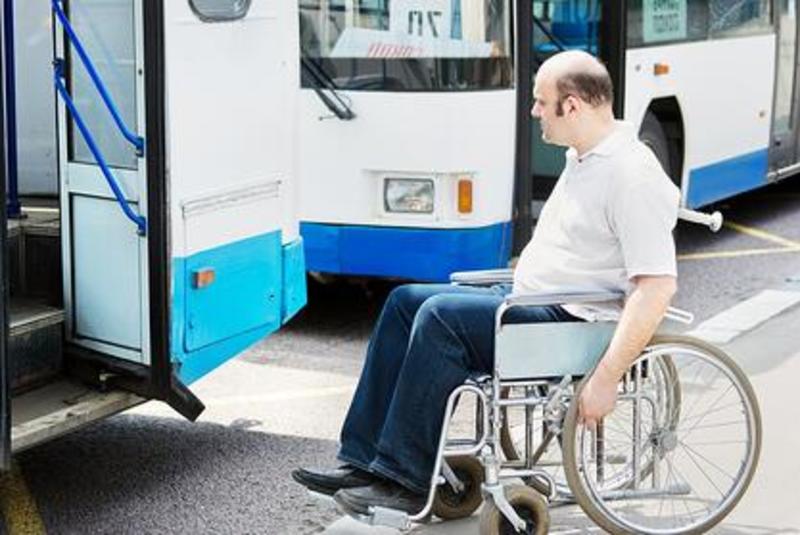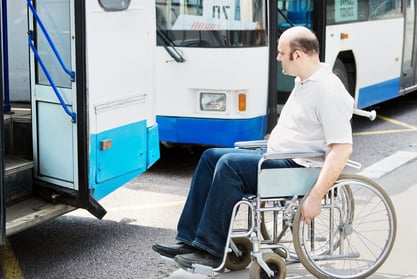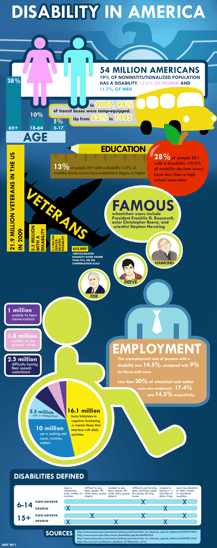News
Everything You Need to know about ADA Regulation

What is the ADA?
The Americans with Disabilities Act, which is commonly referred to as ADA, became law in 1990. The ADA prohibits discrimination against individuals with disabilities in all areas of life including transportation and protects the rights of disabled individuals to access walkways, use of public and other facilities like restaurants, and generally enjoy the same level of access as non-disabled people. This also includes equal access to transportation. The general rule that applies under the ADA is that all limits on accessibility to transportation for disabled individuals must be removed if it’s reasonable to do so.
ADA Regulation for the Bus Industry
Applies to:
- State and local government agencies
- Non-profit service providers that offer public accommodation
- Privately operated entities offering certain types of educational courses
- Privately operated transportation organizations such as airport shuttles, hotel shuttles, private buses, and taxis
In addition, facilities used by these operators are also subject to regulation for equal accessibility. For the purposes of this blog, we will focus on the vehicles only.
The above stated entities are required to abide by a number of ADA requirements, such as providing disability access in new vehicles, making a reasonable attempt to purchase buses with disability access, and making proper adjustments to buses so they are handicap accessible at all times. Equipment and facilities such as lifts, ramps, securing devices such as straps for securing wheelchairs on board, signage, and communication devices must be in good operating condition. If any one of these features is out of order, it must be repaired promptly. In the interim, an alternative accessible vehicle or option must be made available.
In addition, public transportation agencies are required to provide complementary para transit transportation. These services typically operate handicapped accessible vans and shuttles that provide origin to destination services for handicapped individuals.

A 2013 study looked at bus ramps for over 200 wheelchair services provided by fixed route, public transportation. The study found that half of the buses in use exceeded the proposed guidelines of a 1:6 maximum slope. 2.5% of boarding buses exceed this same guideline. This means that most public transportation was not able to serve people with disabilities.
A good example of the implementation of these positive changes that the ADA has brought about can be seen in the city of Waterloo, Iowawhere most of the local 130 bus stops where not up to standard. The small change of creating a path to the bus stop could make a huge difference for people with disabilities.
The new regulation might require you to make updates to your bus fleet. Creative Bus Sales has a variety of great wheelchair accessible van and buses for sale to replace outdated buses. For most operations, understanding wheelchair ramps and lift options can be a big challenge. Our knowledgeable team of service professionals can help you make the updates to your lift and ensure your wheelchair seating follows current regulation.
Check out this great video about one of the manufacturers we represent, Transit Works:
Wheelchair Inventory
The Creative team makes sure that your fleet is ADA-ready.

We Can Help Ensure That You Are Compliant
If your bus or fleet does not meet ADA regulations, or if you are unsure that it does, call us today at 888.633.838. We can help you determine your status and outline a plan of action.
Creative Bus Sales has been in the industry for 38 years and we work with major manufacturers of wheelchair ramps, lifts, and safety features. Following all ADA regulations can be a challenge which is why the Creative team is here to support your need.
Creative Bus Sales has valuable resources to help you learn even more about the type of wheelchair buses.

Other Helpful Resources:
- Retirement and healthcare bus needs: http://www.creativebussales.com
- Federal Transit Administration. Guidance on Interline Service and Notice to Passengers
- https://www.ada.gov/regs2010/2010ADAStandards/Guidance2010ADAstandards.Htm
- Guidance on Interline Service and Notice to Passengers. February 4, 2016,
https://goo.gl/WZRupH- Amanieh, Elizabeth. “Waterloo Looks to Accessible Bus Benches.” KWWL, 11 Dec. 2017,www.kwwl.com.
- “About ADAAG for Transportation Vehicles”, United States Access Board
https://www.access-board.gov/guidelines-and-standards/transportation/vehicles/about-adaag-for-transportation-vehicles- Rev Group, “Rev a Leader in Equal Access Bus Design”, Rev Group, July 2016
https://www.revgroup.com/news- ADA Requirements for Over-the-Road Bus Companies, September 27, 2016https://www.fmcsa.dot.gov/regulations/americans-disabilities-act-reporting-and-other-requirements-over-road-bus-companies
- Rick, Neale “Study: 89% of SCAT bus Stops are not ADA compliant”, Florida Today
https://www.floridatoday.com/story/news/local/2015/03/17/study-scat-bus-stops-ada-compliant/24898043/

